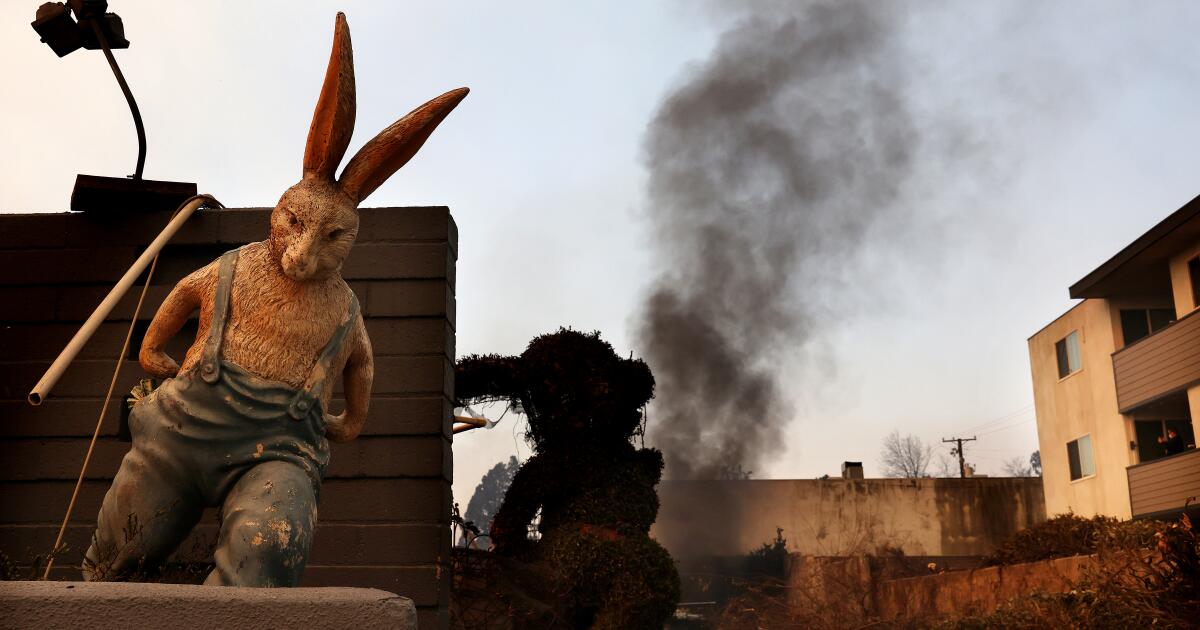Education
Colleges Will Be Able to Block Out a Student’s Race on Admissions Applications

Each year, the million or so students applying to college through the Common App are given the option to check a box, disclosing whether they identify as Hispanic, Asian, Black or white, among other choices.
Now, with the U.S. Supreme Court expected to rule soon against race-conscious admissions — and with colleges wanting to follow the law — the Common App has made a pre-emptive move on what is known as the “race box.”
Beginning Aug. 1, colleges will be able to hide the information in those boxes from their own admissions teams, said Jenny Rickard, chief executive of the Common App, in an interview.
The new option will help colleges comply “with whatever legal standard the Supreme Court will set in regards to race in admissions,” Common App said in a statement. A nonprofit, Common App administers a universal application used by more than 1,000 colleges and universities.
The decision, which appears to be aimed at immunizing colleges from litigation, is one of the first concrete examples of how college admissions may be transformed if the Supreme Court bans or restricts race-conscious admissions. The college opt-out could also put more pressure on applicants to signal their racial and ethnic background through other means, primarily in essays or teacher recommendations.
The scope of the court’s decision, expected in late June, is unknown. But the justices showed a keen interest in the use of race boxes during the oral arguments last fall.
Colleges have said they will follow the law, but are wary of future litigation. Groups opposed to affirmative action have said that they may file lawsuits that could test the boundaries of the Supreme Court’s ruling.
The potential case against race boxes is obvious, according to Edward Blum, founder of Students for Fair Admissions, the plaintiffs in the current court cases against Harvard and the University of North Carolina.
“If racial preferences are determined to be illegal, then it must follow that racial classification boxes should not be allowed on college application forms,” he said.
Masking the race boxes on the Common App could give universities a measure of plausible deniability, legal experts said, and perhaps some protection from lawsuits.
Essays are a less likely target for lawsuits. As a practical matter, it would be hard to redact mentions of race from the many thousands of application essays that colleges receive every year, with more than 50,000 applicants at Harvard alone.
But more litigation around the broader issue of diversity, like scholarships for Black students, seems likely. “There is a colossal, well-organized, well-funded attack agenda,” said Art Coleman, managing partner of Education Counsel, a consulting firm working with universities on the Supreme Court cases.
During oral arguments, the Supreme Court justices spent considerable time discussing the race box and the application essay. Some variant of the phrase “checking the box” was used more than 30 times during the five hours of argument before the justices last October.
Patrick Strawbridge, a lawyer for Students for Fair Admissions, sparred with the justices over when it would be appropriate for admissions officers to know the race of an applicant. He suggested that much would depend on the context of the revelation.
“What we object to is a consideration of race and race by itself,” Mr. Strawbridge told the justices.
“Race in a box-checking way, as opposed to race in an experiential statement?” Justice Amy Coney Barrett, one of the conservative majority expected to be sympathetic to the plaintiffs, elaborated.
Mr. Strawbridge said it would be harder to object to a thoughtful essay that invoked the student’s race in the context of a highly personal story.
An essay about overcoming racial discrimination could be permitted, because it “obviously indicates that the applicant has grit, that the applicant has overcome some hardship,” Mr. Strawbridge told the justices. “It tells you something about the character and the experience of the applicant other than their skin color.”
Isiaah Crawford, president of the University of Puget Sound, said he hoped the court would agree with Mr. Strawbridge on that point.
“We certainly do believe that student applicants should have a First Amendment right to be able to speak about their background if they choose to do so,” Dr. Crawford said.
If discussion of a student’s race were fully barred, he said, a white applicant to an Ivy League school might be able to write about being the child of an alumna, while a Black student might not be able to “to talk about his or her background, whose grandparents weren’t let into schools like the Ivy League, and how that has impacted their choices.”
The Common App will continue to collect racial information for its own purposes, like looking at trends in applications among different groups, regardless of how the Supreme Court decides, Ms. Rickard said. Because the nonprofit does not admit students, it is unlikely to be a target of litigation.
Colleges will be able to suppress racial information from both the printable and digital forms of applications. The Common App already allows colleges to hide information about test scores if they do not consider test scores in admissions. Colleges have also been able to hide students’ Social Security numbers, birth dates, gender and criminal history.
Mr. Coleman said he hoped the court’s focus during oral arguments on checking the box meant that it would rule against only the most simplistic and stereotypical use of race in admissions.
Otherwise, he said, trying to hide an applicant’s race could become an exercise in absurdity. For instance, during an applicant’s interview, “Are you supposed to go behind a curtain?”

Education
Four Fraternity Members Charged After a Pledge Is Set on Fire

Four fraternity members at San Diego State University are facing felony charges after a pledge was set on fire during a skit at a party last year, leaving him hospitalized for weeks with third-degree burns, prosecutors said Monday.
The fire happened on Feb. 17, 2024, when the Phi Kappa Psi fraternity held a large party at its house, despite being on probation, court documents show. While under probation, the fraternity was required to “demonstrate exemplary compliance with university policies,” according to the college’s guidelines.
Instead, prosecutors said, the fraternity members planned a skit during which a pledge would be set on fire.
After drinking alcohol in the presence of the fraternity president, Caden Cooper, 22, the three younger men — Christopher Serrano, 20, and Lars Larsen, 19, both pledges, and Lucas Cowling, 20 — then performed the skit, prosecutors said.
Mr. Larsen was set on fire and wounded, prosecutors said, forcing him to spend weeks in the hospital for treatment of third-degree burns covering 16 percent of his body, mostly on his legs.
The charges against Mr. Cooper, Mr. Cowling and Mr. Serrano include recklessly causing a fire with great bodily injury; conspiracy to commit an act injurious to the public; and violating the social host ordinance. If convicted of all the charges, they would face a sentence of probation up to seven years, two months in prison.
Mr. Larsen himself was charged. The San Diego County District Attorney’s office said that he, as well as Mr. Cooper and Mr. Cowling, also tried to lie to investigators in the case, deleted evidence on social media, and told other fraternity members to destroy evidence and not speak to anyone about what happened at the party.
All four men have pleaded not guilty.
Lawyers representing Mr. Cooper and Mr. Cowling did not immediately respond to messages requesting comment on Tuesday. Contact information for lawyers for Mr. Serrano and Mr. Larsen was not immediately available.
The four students were released on Monday, but the court ordered them not to participate in any fraternity parties, not to participate in any recruitment events for the fraternity, and to obey all laws, including those related to alcohol consumption.
The university said Tuesday that it would begin its own administrative investigation into the conduct of the students and the fraternity, now that the police investigation was complete.
After it confirmed the details, the dean of students office immediately put the Phi Kappa Psi chapter on interim suspension, which remains in effect, college officials confirmed on Tuesday.
Additional action was taken, but the office said it could not reveal specifics because of student privacy laws.
“The university prioritizes the health and safety of our campus community,” college officials said in a statement, “and has high expectations for how all members of the university community, including students, behave in the interest of individual and community safety and well-being.”
At least half a dozen fraternities at San Diego State University have been put on probation in the last two years, officials said.
Education
Video: Several Killed in Wisconsin School Shooting, Including Juvenile Suspect

new video loaded: Several Killed in Wisconsin School Shooting, Including Juvenile Suspect
transcript
transcript
Several Killed in Wisconsin School Shooting, Including Juvenile Suspect
The police responded to a shooting at a private Christian school in Madison, Wis., on Monday.
-
Around 10:57 a.m., our officers were responding to a call of an active shooter at the Abundant Life Christian School here in Madison. When officers arrived, they found multiple victims suffering from gunshot wounds. Officers located a juvenile who they believe was responsible for this deceased in the building. I’m feeling a little dismayed now, so close to Christmas. Every child, every person in that building is a victim and will be a victim forever. These types of trauma don’t just go away.
Recent episodes in Guns & Gun Violence
Education
Video: Biden Apologizes for U.S. Mistreatment of Native American Children

new video loaded: Biden Apologizes for U.S. Mistreatment of Native American Children
transcript
transcript
Biden Apologizes for U.S. Mistreatment of Native American Children
President Biden offered a formal apology on Friday on behalf of the U.S. government for the abuse of Native American children from the early 1800s to the late 1960s.
-
The Federal government has never, never formally apologized for what happened until today. I formally apologize. It’s long, long, long overdue. Quite frankly, there’s no excuse that this apology took 50 years to make. I know no apology can or will make up for what was lost during the darkness of the federal boarding school policy. But today, we’re finally moving forward into the light.
Recent episodes in Politics
-

 Business1 week ago
Business1 week agoThese are the top 7 issues facing the struggling restaurant industry in 2025
-

 Culture1 week ago
Culture1 week agoThe 25 worst losses in college football history, including Baylor’s 2024 entry at Colorado
-

 Sports1 week ago
Sports1 week agoThe top out-of-contract players available as free transfers: Kimmich, De Bruyne, Van Dijk…
-

 Politics1 week ago
Politics1 week agoNew Orleans attacker had 'remote detonator' for explosives in French Quarter, Biden says
-

 Politics7 days ago
Politics7 days agoCarter's judicial picks reshaped the federal bench across the country
-

 Politics5 days ago
Politics5 days agoWho Are the Recipients of the Presidential Medal of Freedom?
-

 Health4 days ago
Health4 days agoOzempic ‘microdosing’ is the new weight-loss trend: Should you try it?
-

 World1 week ago
World1 week agoIvory Coast says French troops to leave country after decades














